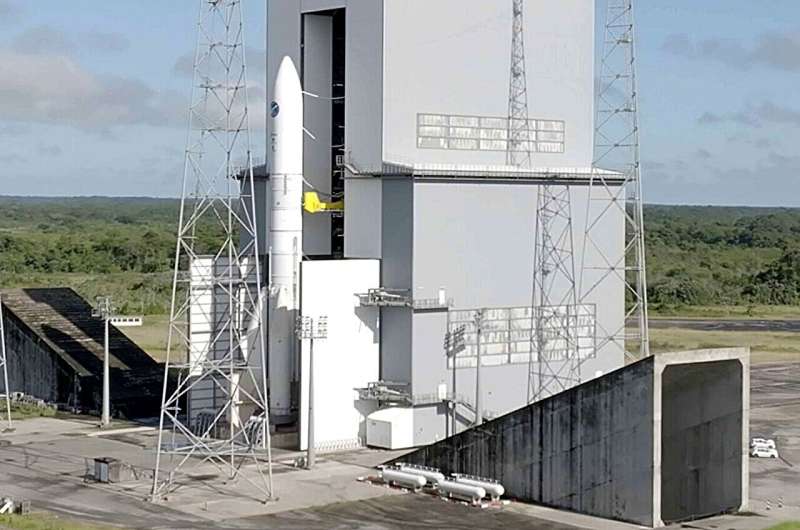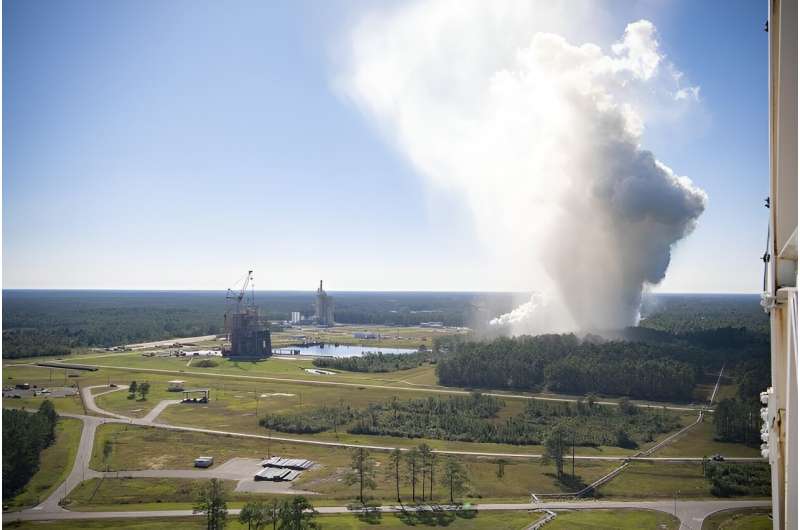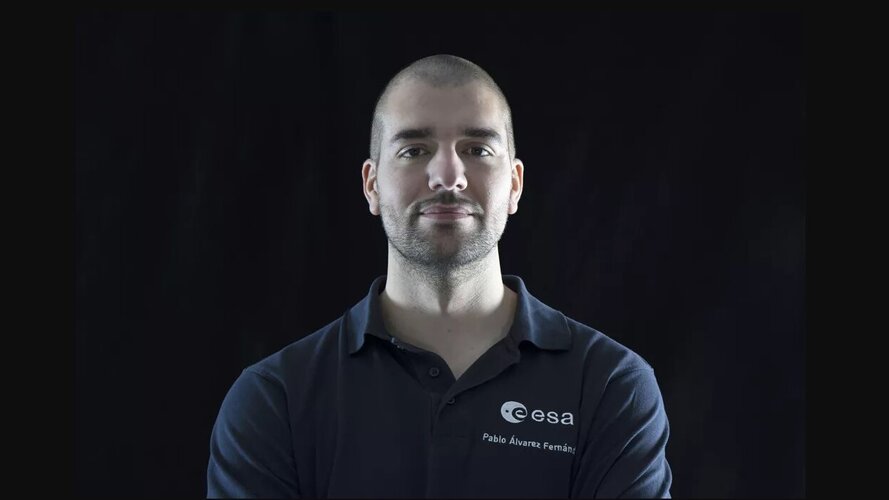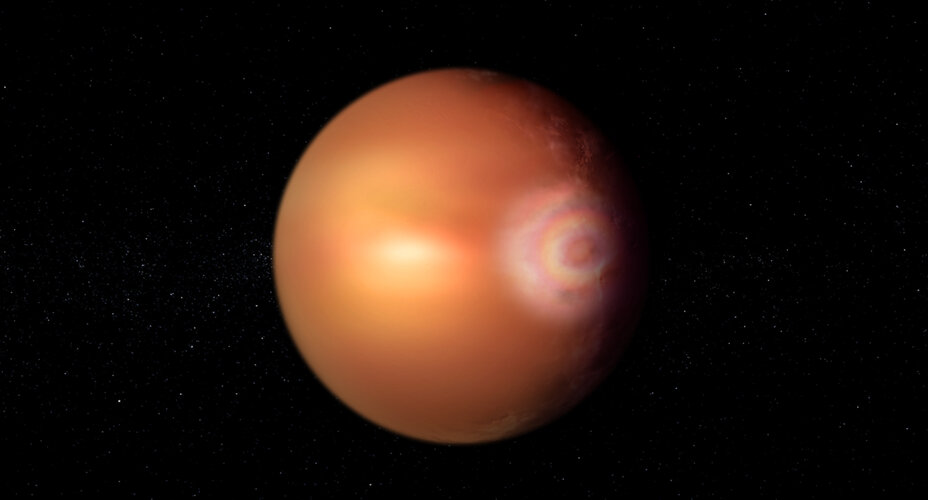Video: Ariane 6 passes tests in preparation for first flight
Friday, 05 April 2024 15:51
Europe's next rocket, Ariane 6, passed all its qualification tests in preparation for its first flight, and the full-scale test model has been removed from the launch pad to make way for the real rocket that will ascend to space.
The test model at Europe's Spaceport in Kourou, French Guiana, stood 62 m high. It is exactly the same as the "production model" Ariane 6 rockets that will soon be launched, except that its boosters do not need to be tested as part of the complete rocket, so the boosters are not fueled.
Teams preparing Ariane 6 for its inaugural flight successfully completed for the first time a launcher preparation and countdown sequence, on 18 July. Representatives of ESA, Ariane 6 prime contractor ArianeGroup and launch base prime contractor and test conductor CNES completed important objectives for system qualification and performed a series of actions fully representative of a launch chronology.
The launch simulation included the removal of the mobile gantry, the chill-down of ground and launcher fluidic systems, the filling of the upper and core stage tanks with liquid hydrogen (–253°C) and liquid oxygen (–183°C), and at the end of the test, the successful completion of a launch chronology up to the ignition of the Vulcain 2.1 engine thrust chamber by the ground system.
NASA achieves milestone for engines to power future Artemis missions
Friday, 05 April 2024 14:20
NASA achieved a major milestone April 3 for production of new RS-25 engines to help power its Artemis campaign to the moon and beyond with completion of a critical engine certification test series at NASA's Stennis Space Center near Bay St.
Week in images: 01-05 April 2024
Friday, 05 April 2024 12:10
Week in images: 01-05 April 2024
Discover our week through the lens
Virgin Galactic countersues Boeing about mothership project
Friday, 05 April 2024 08:35

A stellar role for ESA
Friday, 05 April 2024 08:30
Launched on 21 February 2024 on Apple TV+, new original series Constellation has gripped viewers with its mix of sci-fi and mind-bending mystery.
Earth from Space: Victoria, Australia
Friday, 05 April 2024 07:00 Image:
This Copernicus Sentinel-2 image features part of Victoria, a state in southeast Australia.
Image:
This Copernicus Sentinel-2 image features part of Victoria, a state in southeast Australia. Astro Chat with Pablo Álvarez Fernández | ESA Explores podcast
Friday, 05 April 2024 07:00 Video:
00:29:37
Video:
00:29:37
Pablo Álvarez Fernández, one of ESA's five astronaut candidates currently undergoing basic astronaut training at the European Astronaut Centre in Cologne, Germany, shares his experiences in astronaut training, his favourite lessons, and his view on the future of space exploration. Also, stay tuned to hear his favourite space-related quote and movie!
This is Episode 5 of our ESA Explores podcast series introducing the ESA astronaut class of 2022, recorded in November 2023.
Music and audio editing by Denzel Lorge. Cover art by Gaël Nadaud.
First ‘glory’ on hellish distant world?
Friday, 05 April 2024 07:00
For the first time, potential signs of the rainbow-like ‘glory effect’ have been detected on a planet outside our Solar System. Glory are colourful concentric rings of light that occur only under peculiar conditions.
Data from ESA’s sensitive Characterising ExOplanet Satellite, Cheops, along with several other ESA and NASA missions, suggest this delicate phenomenon is beaming straight at Earth from the hellish atmosphere of ultra-hot gas giant WASP-76b, 637 light-years away.
Seen often on Earth, the effect has only been found once on another planet, Venus. If confirmed, this first extrasolar glory will reveal
Total solar eclipse forecast: Will your city have clear skies Monday?
Thursday, 04 April 2024 20:20
Some who hope to witness Monday's total solar eclipse may see the sun obscured by clouds instead of by the moon.
There's still plenty of time for forecasts to change, but meteorologists predict that eclipse day storms could blanket parts of the path, which stretches from Mexico and Texas through Maine and parts of Canada.
If clouds don't get in the way, viewers in the path wearing eclipse glasses will see the moon begin to slowly cover the sun until it is completely blocked, a period of darkness called "totality" during which temperatures drop and the sun's corona will be visible.
What's the forecast along the eclipse's path?
Clouds are expected in much of the eclipse's path Monday thanks to storms that are moving across the central U.S.
Artificial Eclipses on Demand: ESA's Proba-3 Breakthrough
Thursday, 04 April 2024 19:06 Hundreds of millions of people will witness next week's total solar eclipse across North America, and solar physicists from around the globe are flocking to join them. Eclipses offer a brief glimpse of the Sun's ghostly surrounding atmosphere - the solar corona - normally kept invisible by the Sun's sheer glare. But the corona will soon be opened up for more sustained study: today in Belgium ESA
Hundreds of millions of people will witness next week's total solar eclipse across North America, and solar physicists from around the globe are flocking to join them. Eclipses offer a brief glimpse of the Sun's ghostly surrounding atmosphere - the solar corona - normally kept invisible by the Sun's sheer glare. But the corona will soon be opened up for more sustained study: today in Belgium ESA 









